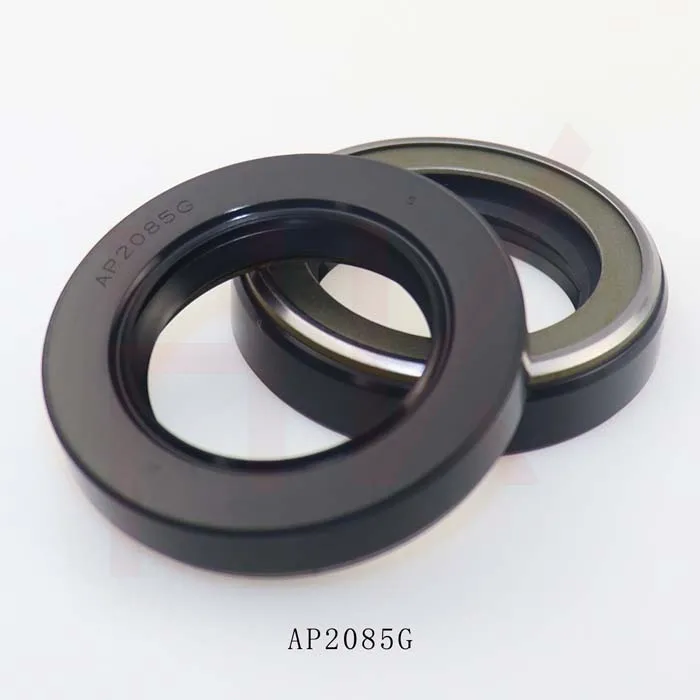Nov . 19, 2024 07:26 Back to list
hydraulic gear pump seals
Exploring Hydraulic Gear Pump Seals Importance, Types, and Maintenance
Hydraulic gear pumps are critical components in various industrial applications, responsible for transferring hydraulic energy through fluid movement. They operate using the meshing of gears to create a vacuum that draws in liquid, which is then discharged under pressure. One of the most important aspects of a hydraulic gear pump's functionality and reliability is the seal used within the system. This article explores the significance of hydraulic gear pump seals, the different types available, and best practices for their maintenance.
Importance of Hydraulic Gear Pump Seals
The primary function of seals in hydraulic gear pumps is to prevent fluid leakage, which can lead to operational inefficiencies and environmental hazards. Seals ensure that hydraulic fluid remains contained within the pump, maintaining pressure and facilitating the pump’s performance. A reliable seal reduces the risk of contamination and prevents the ingress of dirt and debris, which can damage the pump components. Moreover, effective sealing minimizes the risk of wear and tear, extending the lifespan of the pump and ultimately improving the overall efficiency of hydraulic systems.
Types of Hydraulic Gear Pump Seals
Hydraulic gear pump seals come in various types, each designed to cater to specific operational demands and environmental conditions. Some of the most common types include
1. O-Rings O-rings are circular seals that provide a tight fit in a groove, preventing fluid from leaking through the interface. They are versatile, cost-effective, and can handle moderate pressure and temperature ranges. However, O-rings may not be suitable for high-pressure or high-temperature situations unless specially formulated materials are used.
2. Mechanical Seals These are sophisticated seals that consist of rotating and stationary components. Mechanical seals can handle higher pressures and are commonly used in applications where reliability is paramount. They are ideal for preventing wear and fluid leakage while accommodating greater compressive forces.
3. Lip Seals Also known as radial seals, lip seals are designed to seal around rotating shafts. Their flexible lip creates a tight seal to prevent fluid from escaping while allowing the shaft to rotate freely. They are commonly used in hydraulic gear pumps where there is a rotating element involved.
4. Packing Seals Made from braided fibers, packing seals can be used in situations where a large amount of compression is needed. While they are effective in preventing leaks, they can generate heat and may require frequent maintenance to ensure optimal performance.
hydraulic gear pump seals

5. Custom Seals In some industrial applications, standard seals may not suffice due to unique conditions like extreme temperatures or pressures. Custom seals are designed to meet specific requirements, considering factors such as the type of fluid, operational environment, and expected lifespan.
Maintenance of Hydraulic Gear Pump Seals
Maintaining hydraulic gear pump seals is crucial for ensuring the longevity and efficiency of the pump. Here are some best practices for seal maintenance
1. Regular Inspection Routine inspections of the seals for signs of wear, cracks, or deformations can help in early detection of potential failures. Seal integrity should be checked during scheduled maintenance intervals to ensure optimal performance.
2. Proper Installation Incorrect installation of seals can lead to premature failures. Always follow the manufacturer’s specifications and guidelines for the installation process. Ensure that the sealing surfaces are clean and free of debris before fitting seals.
3. Fluid Compatibility Using incompatible hydraulic fluids can degrade seals over time. Always verify that the hydraulic fluid being used matches the specifications provided by the seal manufacturer.
4. Prevent Contamination Keeping the hydraulic system free from contamination is critical. Regularly check and replace filters as needed, and ensure that the hydraulic fluid is not contaminated with dirt, water, or other foreign agents.
5. Temperature and Pressure Monitoring Monitoring system temperature and pressure can prevent conditions that may negatively impact seal integrity. If temperatures or pressures exceed recommended ranges, appropriate measures should be taken to stabilize the system.
Conclusion
Hydraulic gear pump seals are integral to the performance, reliability, and efficiency of hydraulic systems. Understanding the various types of seals and implementing effective maintenance practices will not only prolong the life of the pump but also ensure that the entire hydraulic system operates smoothly. Investing time and resources in maintaining these seals is essential for achieving optimal performance and preventing costly breakdowns in industrial operations.
-
TCN Oil Seal Metal Ring Reinforcement for Heavy Machinery
NewsJul.25,2025
-
Rotary Lip Seal Spring-Loaded Design for High-Speed Applications
NewsJul.25,2025
-
Hydraulic Cylinder Seals Polyurethane Material for High-Impact Jobs
NewsJul.25,2025
-
High Pressure Oil Seal Polyurethane Coating Wear Resistance
NewsJul.25,2025
-
Dust Proof Seal Double Lip Design for Construction Equipment
NewsJul.25,2025
-
Hub Seal Polyurethane Wear Resistance in Agricultural Vehicles
NewsJul.25,2025
-
The Trans-formative Journey of Wheel Hub Oil Seals
NewsJun.06,2025
Products categories
















